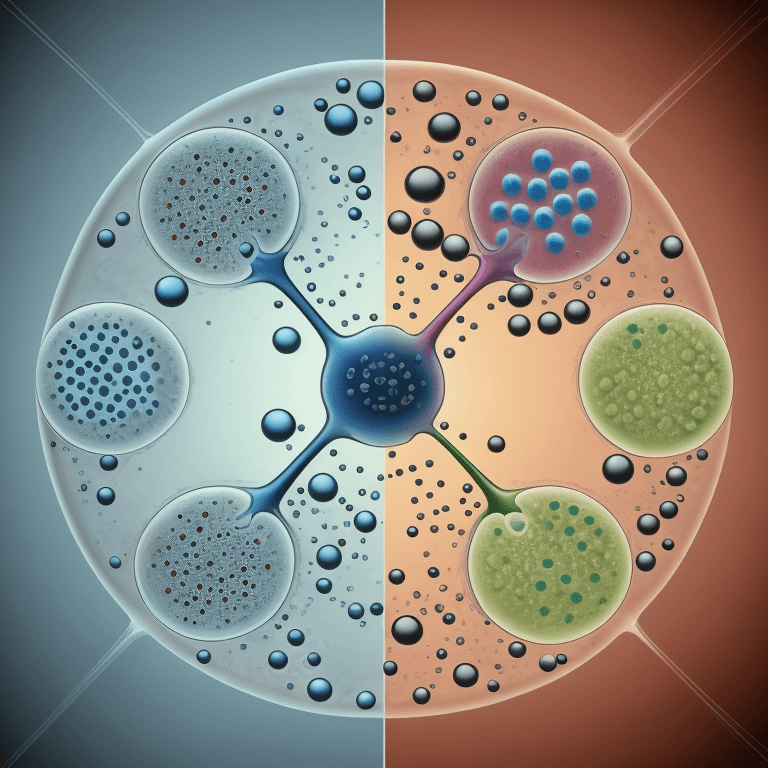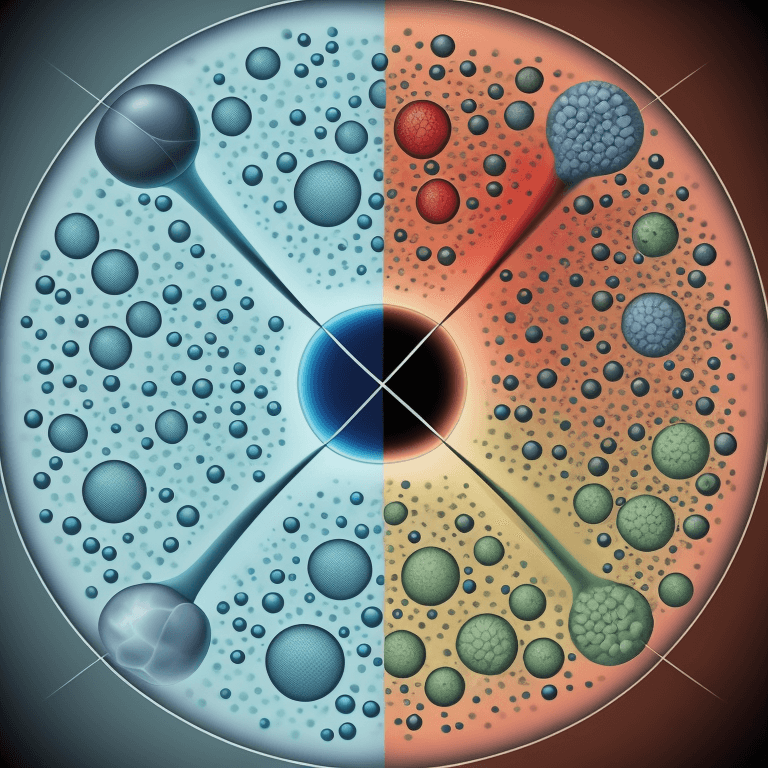
The 7 key differences between osmosis and diffusion are:
- Osmosis involves the movement of water molecules, while diffusion refers to the movement of any solute.
- Osmosis equalizes solute concentrations by the flow of water. Diffusion equalizes concentrations by direct mixing of solutes.
- Osmosis only occurs across a semipermeable membrane that blocks solutes but allows water. Diffusion does not require a membrane.
- Osmosis generates osmotic pressure when a membrane restricts water flow. Diffusion does not involve pressure.
- In biology, osmosis is vital for moving water into and out of cells. Diffusion moves nutrients, wastes, and gases.
- Osmosis is powered by solute gradients, with water flowing from low to high solute zones. Diffusion is powered by molecular motion from high to low concentrations.
- Osmosis can work against a concentration gradient, if enough pressure is applied. Diffusion only goes “downhill” along its gradient.
So in summary, osmosis is a specialized type of diffusion specifically describing the movement of water molecules across a semipermeable membrane in order to equalize solute concentrations on both sides.
Osmosis and diffusion are two types of transport processes.
Osmosis is the movement of water molecules through a membrane, while diffusion is the movement of particles (molecules or atoms) through a membrane.

The main difference between osmosis and diffusion is that osmosis always involves the movement of water molecules, while diffusion can involve the movement of either water molecules or other types of particles.
What is the difference between osmosis and diffusion?
Osmosis and diffusion are both processes that involve the movement of molecules across a cell membrane. However, there are some important distinctions between the two.
Osmosis is a process that occurs when there is a difference in the concentration of molecules on either side of a cell membrane.
- This creates a pressure gradient, which causes the molecules to move across the membrane until the concentrations are equalized.
- In contrast, diffusion is a process that occurs when molecules are moving from an area of high concentration to an area of low concentration.
As a result, diffusion does not require a pressure gradient and can occur even when the concentrations on both sides of the membrane are equal.
What is osmosis and how does it work
Osmosis is the movement of water across a semipermeable membrane from an area of high water concentration to an area of low water concentration.

- In order for osmosis to occur, there must be a semipermeable membrane, which is a membrane that only allows certain molecules to pass through it.
- The semi-permeable membrane usually acts as a selective barrier, allowing small molecules like water to pass through while excluding larger molecules.
When two solutions with different concentrations of solutes are separated by a semi-permeable membrane, the solvent (in this case, water) will move across the membrane from the side with the lower concentration of solutes to the side with the higher concentration of solutes in order to equalize the concentrations on both sides.
This process continues until the concentrations on both sides are equal.
Osmosis is a vital process that occurs in cells in order to maintain proper cell function.
Without osmosis, cells would swell up and burst due to the accumulation of too much water.
- Osmosis also helps to regulate the movement of other molecules and ions in and out of cells.
What is diffusion and how does it work
Diffusion is the process by which molecules move from an area of high concentration to an area of low concentration.

- In other words, diffusion is the process by which molecules spread out from an area where they are more concentrated to an area where they are less concentrated.
- Diffusion occurs because molecules are in constant motion.
- They are constantly moving and colliding with one another. When molecules collide, they sometimes change direction.
As a result, over time, the molecules will become evenly distributed throughout a given space. This process is known as diffusion.
How do osmosis and diffusion occur in nature?
Osmosis and diffusion processes can be seen in nature, and they play an important role in the way that plants and animals function.
One example of osmosis in nature is the way that plants take in water from the soil.
The roots of a plant are constantly exposed to water, but they only absorb the water that they need.
- The rest of the water stays in the soil, and this process helps to keep the plant healthy.
- Diffusion can also be seen in plants, specifically in the way that they take in carbon dioxide from the air.
- The leaves of a plant are full of tiny pores, and these pores allow carbon dioxide molecules to diffuse into the leaf.
- Once inside the leaf, carbon dioxide is used for photosynthesis.
Animals also rely on osmosis and diffusion to function properly.

For example, fish use diffusion to absorb oxygen from the water around them. And, humans use osmosis when we drink water.
As the water moves across our semipermeable membranes, it helps to keep our cells healthy and hydrated.
Both osmosis and diffusion are important processes that occur naturally in many different environments. These processes play an important role in the way that plants and animals function and they help to keep us healthy.
Applications of osmosis and diffusion
Osmosis and diffusion are two processes that are important to many different fields. These processes occur naturally and are used in a variety of applications.
In the field of medicine, osmosis is used in dialysis, which is a treatment for kidney failure.
A semi-permeable membrane is used to filter waste products and excess fluid from the blood. Diffusion is also used in medical applications.
For example, when someone breathes in oxygen, the oxygen molecules diffuse into their bloodstream and are carried to the cells throughout their body.
Osmosis and diffusion are also used in food processing.
For example, when making coffee, hot water is added to coffee beans, which causes the water molecules to diffuse into the beans.
- This makes the beans expand and become softer, making them easier to grind.
Diffusion is also used in making tea. When tea leaves are steeped in hot water, the water molecules diffuse into the leaves, causing them to release their flavor into the water.
Importance of understanding the difference between osmosis and diffusion
Understanding the difference between osmosis and diffusion is important for many reasons.
For one, they are two of the most important processes that occur in cells.
Osmosis is the movement of water across a semipermeable membrane, while diffusion is the movement of molecules from an area of high concentration to an area of low concentration.
Additionally, understanding the difference between these two processes can help to explain many everyday phenomena.
For example, why does a raisin placed in water become larger, while a grape placed in vinegar shrinks?
The answer has to do with the relative concentrations of water and solutes on either side of the membrane.
- In the case of the raisin, there is a higher concentration of solutes inside the cell than outside, so water flows into the cell.
- However, in the case of the grape, there is a higher concentration of water outside the cell than inside, so water flows out of the cell.
By understanding osmosis and diffusion, we can gain a better understanding of how cells work and how they are affected by their environment.
Although osmosis and diffusion are similar, they are driven by different forces and have different consequences for cells.
Article Sources
Jacks of Science sources the most authoritative, trustworthy, and highly recognized institutions for our article research. Learn more about our Editorial Teams process and diligence in verifying the accuracy of every article we publish.